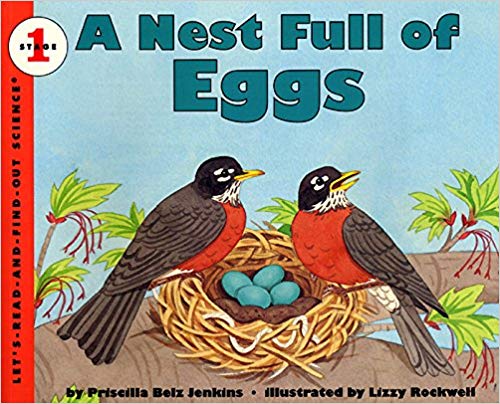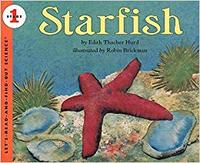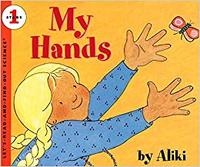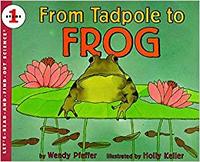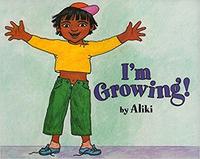A Nest Full of Eggs
分級讀本/橋梁書
A Nest Full of Eggs
書籍資訊
| 適讀年齡 | 4 - 8 |
| 適合年級 | P - 3 |
| 字數 | 723 字 |
| Grade level equivalent | |
| AR level | 3.1 |
| F&p/guided reading level | |
| Lexile | |
| DRA level | |
| 出版社 | HarperCollins |
| 出版日期 | April 1995 |
What's inside that pretty blue egg?A baby bird is growing inside that egg. Slowly the bird develops, until one day it cracks through the shell. Safe inside the nest, under the care of its parents, the chick grows stronger. Soon it will learn how to fly and take care of itself. By next spring it will be ready to build its own nest and raise chicks of its own.
同系列的其他書籍
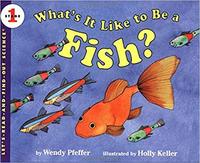
What's It Like to Be a Fish?
Could you live underwater?You can't breathe underwater, but a fish can. You can't eat underwater, but a fish does it every day. A fish's body is perfectly designed for life in water, just as your body is perfect for living on land. Read and find out how a fish's sleek body, fins, scales, and gills keep him in the swim! Then read on to learn how to set up your own goldfish bowl.

From Caterpillar to Butterfly
A caterpillar comes to school in a jar and the class watches the caterpillar each day as it grows and changes. Soon, it disappears into a hard shell called a chrysalis. Where did it go? This is a perfect beginner's guide to the mystery of metamorphosis. Named as a NSTA/CBC Outstanding Science Trade Books for Children, this book explains the life cycle from caterpillar to butterfly with easy-to-follow prose from Deborah Heiligman and warm, colorful illustrations from Bari Weissman. This is a Stage 1 Let's-Read-and-Find-Out, which means the book explains simple science concepts for preschoolers and kindergarteners. Let's-Read-And-Find-Out is the winner of the American Association for the Advancement of Science/Subaru Science Books & Films Prize for Outstanding Science Series. Supports the Common Core Learning Standards and Next Generation Science Standards
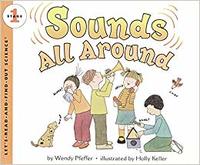
Sounds All Around
Sounds are all around us.Clap your hands, snap your fingers: You're making sounds. Read and find out how people and animals use different kinds of sounds to communicate.
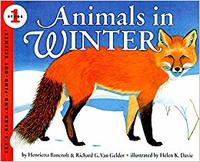
Animals In Winter
Describes the many different ways animals cope with winter, including migration, hibernation, and food storage.
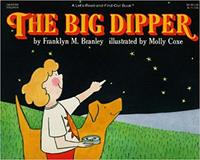
The Big Dipper
Explains basic facts about the Big Dipper, including which stars make up the constellation, how its position changes in the sky, and how it points to the North Star.

Pop! A Book About Bubbles
Why are soap bubbles always round? Why do they always go POP? Simple, clear text explains the basic science behind an activity every child loves.
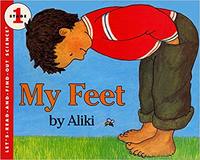
My Feet
Brief text and illustrations describe the various parts of the foot and all the things feet help us to do.
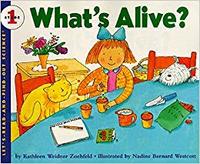
What's Alive?
Looks at the qualities people have in common with other living things, including cats, trees, and birds.
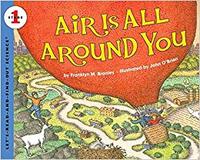
Air Is All Around You
Describes the various properties of air and shows how to prove that air takes up space and that there is air dissolved in water.
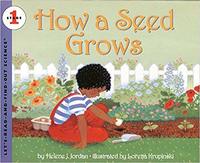
How a Seed Grows
Once, a long time ago, the oak tree in your backyard could have fit your pocket! How can a little acorn grow so big? This book shares the secret of seeds. With the right combination of water, sun, and soil a seed will send roots down into the ground and shoot leaves up into the sunlight. Seeds can grow into flowers or vegetables or even trees. Look inside to learn the simple steps for turning a packet of seeds into a garden.
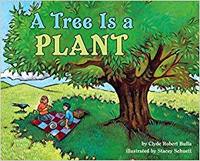
A Tree Is a Plant
A tree is the biggest plant that grows. Trees can live for a very long time, and they are alive all year long, even when they look dead in winter. Clyde Robert Bulla's accessible text and Stacey Schuett's lush, accurate illustrations follow a tree's continuous life cycle through spring, summer, winter, and fall.This is a Stage 1 Let's-Read-and-Find-Out, which means the book explains simple science concepts for preschoolers and kindergarteners. Let's-Read-And-Find-Out is the winner of the American Association for the Advancement of Science/Subaru Science Books & Films Prize for Outstanding Science Series.Supports the Common Core Learning Standards and Next Generation Science Standards.
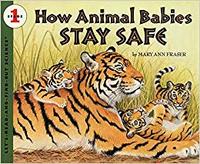
How Animal Babies Stay Safe
How do animal babies survive in a dangerous world? Activities encourage young readers to think about the ways they themselves stay safe, and teach them what to do if they encounter a baby animal in the wild.
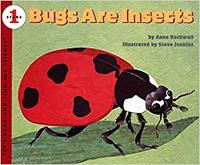
Bugs Are Insects
Is a spider an insect? Is a ladybug a bug? Lean how to tell what is an insect and what isn't, and discover the fascinating world of the tiny creatures who live in your own backyard.
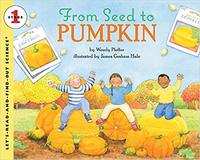
From Seed to Pumpkin
Pumpkins can be baked in a pie, carved into jack-o'-lanterns, and roasted for a healthy snack. But how does a tiny seed turn into a big pumpkin? With clear text and detailed, colorful illustrations, this book explains what a pumpkin seed needs to help it grow! This book also includes delicious pumpkin recipes and easy experiments to do with pumpkin seeds. This is a Stage 1 Lets-Read-and-Find-Out, which means the book explains simple science concepts for preschoolers and kindergarteners. Lets-Read-And-Find-Out is the winner of the American Association for the Advancement of Science/Subaru Science Books & Films Prize for Outstanding Science Series. Supports the Common Core Learning Standards and Next Generation Science Standards
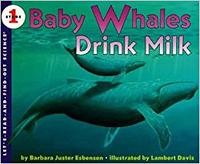
Baby Whales Drink Milk
The title epitomizes Esbensens creative presentation of an important concept: how whales differ from the fish they seem to resemble and share characteristics with other mammals. An excellent addition to the Lets-Read-and-Find-Out series.K. Introduces a full range of information about whale anatomy, development, and behavior. Esbensens simple, informative text keeps its young audience clearly in view.BL.
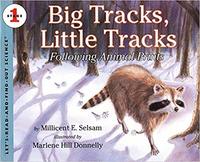
Big Tracks, Little Tracks
Keeping a sharp eye out for clues like animal tracks and odors can help people identify the animals that have passed through an area.
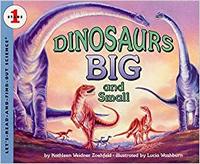
Dinosaurs Big and Small
Some dinosaurs were big. How big? As long as four school buses in a row, as heavy as sixteen elephants. Some dinosaurs were small. How small? Read and find out!
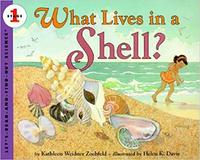
What Lives in a Shell?
What makes a shell like a house?A house is a home for you, a nest is a home for a bird, and a cave is a home for a bear. But for some animals a shell is a home. Snails and turtles and crabs and clams all have shells that act as their homes and protect them from harm. In this book you'll learn all about these and other crustaceous creatures, for whom a shell is just the right sort of home.
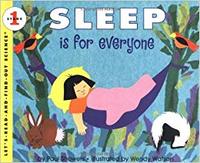
Sleep Is For Everyone
Discusses the importance of sleep and what happens to our brains and bodies during slumber.
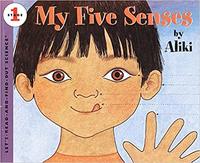
My Five Senses
Explains the five ways in which a small boy can experience and enjoy the world around him
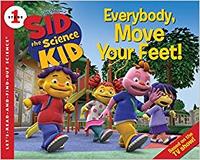
Sid the Science Kid: Everybody, Move Your Feet!
Let's-Read-and-Find-Out about ExerciseWhat would happen if you did nothing but watch TV all day? Why is it important to get up and play? Read and find out all about exercise with Sid the Science Kid!Introduce basic science concepts to young children and help satisfy their curiosity about how the world works.
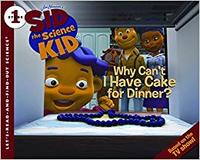
Sid the Science Kid: Why Can't I Have Cake for Dinner?
Have you ever wondered what would happen if you ate cake all the time? Why do you need to eat a lot of different kinds of food? Read and find out all about nutrition with Sid the Science Kid!

Snow Is Falling
Describes snow's physical qualities and how quantities of it can be fun as well as dangerous.
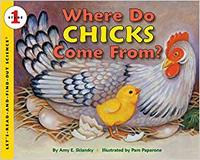
Where Do Chicks Come From?
Describes what happens day-by-day for the three weeks from the time a hen lays an egg until the baby chick hatches. Let's-Read-And-Find-Out Science Stage 1.
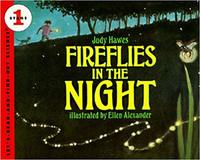
Fireflies In The Night
Describes how and why fireflies make their light, how to catch and handle them, and several uses for firefly light.
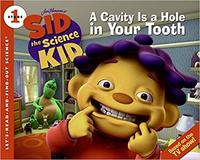
Sid the Science Kid: A Cavity Is a Hole in Your Tooth
Let's-Read-and-Find-Out About TeethHave you ever wondered what would happen if you never brushed your teeth? Why do you need your teeth to be strong and hard? Read and find out all about teeth with Sid the Science Kid!
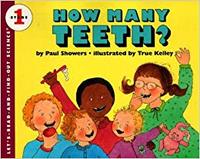
How Many Teeth?
Introduces teeth, describing how many we have at various stages of life, why they fall out, and what they do.

Clouds
Do you ever wake up and wonder what the weather will be? Instead of turning on the TV to find out, you can just look out your window at the clouds. How do you know what type of clouds can forecast a change of weather? Read and find out.
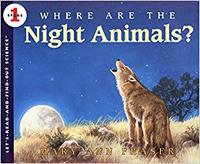
Where Are The Night Animals?
Describes various nocturnal animals--including the opossum, barn owl, coyote, brown bat, and tree frog--and their nighttime activities, and teaches new readers how to look for night animals with a special activities section.

Ducks Don't Get Wet
Describes the behavior of different kinds of ducks and, in particular, discusses how all ducks use preening to keep their feathers dry.
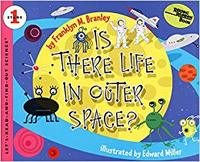
Is There Life in Outer Space?
Life In Outer SpaceBears and birds, people and planets -- many things live on planet Earth. But do they live anywhere else? For a long time people have wondered about that. Maybe you have, too. Read and find out how scientists search for signs of life in outer space.
其他您可能會有興趣的書籍
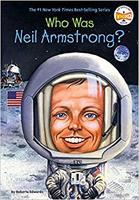
Who Was Neil Armstrong?
On July 20, 1969, Neil Armstrong stepped on the moon and, to an audience of over 450 million people, proclaimed his step a giant leap for mankind. This Eagle Scout built his own model planes as a little boy and then grew up to be a test pilot for experimental aircraft before becoming an astronaut.
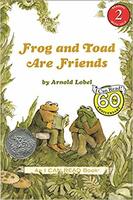
Frog And Toad Are Friends
From writing letters to going swimming, telling stories to finding lost buttons, Frog and Toad are always there for each other-just as best friends should be.
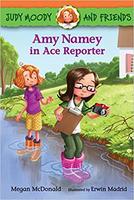
Amy Namey in Ace Reporter
Amy Namey is chasing a news story in this Judy Moody story for newly independent readers. Amy Namey, Ace Reporter, is on the hunt for a good news story. But not a lot happens in the town of Frog Neck Lake. So what's a budding reporter to do? Team up with Judy Moody! With Judy along to sniff out a story, anything can happen. Like maybe a close encounter with the famed Great Virginia Sea Serpent, Taboo! Are Amy and Judy about to stumble upon the scoop of the century?
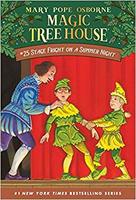
Stage Fright On A Summer Night (MTH #25)
Jack and Annie are whisked back to Elizabethan England where they meet William Shakespeare, and luckily for them he is desperate for two small actors for his latest play.
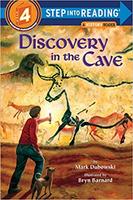
Discovery in the Cave
This amazing true adventure story about the discovery of the Lascaux Cave will have young readers feeling that they've discovered something pretty special, too!In 1940, four teenage boys and a dog dropped themselves into a hole in the forest floor. Using a flaming grease gun as a torch, they ventured deep underground, eventually coming to a huge cave, the walls of which were covered with life-size paintings of animals. Whole herds of horses! Deer with horns as big as tree branches! Giant bison! The boys were amazed by their discovery. They'd stumbled upon the world's finest examples of prehistoric painting!Perfect for classroom use, this Step 4 Step into Reading book is realistically illustrated by award-winning artist Bryn Barnard.
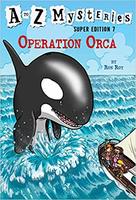
Operation Orca
Thar she blows! Dink, Josh, and Ruth Rose are on an Alaskan whale watching adventure. On their first day, they see a mother orca and her calf. But the next day, the baby orca is missing! The calf needs its mothers milk. Can the kids solve this whale of a mystery? The alphabet is over, but the mysteries continue in this seventh A to Z Mysteries Super Edition, featuring a 26-letter secret message hidden in the illustrations.

Henry and Mudge and the Big Sleepover
Henry and his dog Mudge are invited to a sleepover in Patrick's attic, where they watch monster movies, eat pizza, and enjoy a contest to determine whose dog is the best popcorn catcher.
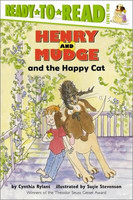
Henry and Mudge and the Happy Cat
Henry's family takes in a stray cat, the ugliest cat they have ever seen, and an amazing relationship blossoms between it and their big dog Mudge.
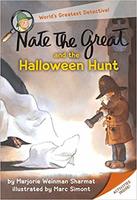
Nate The Great And The Halloween Hunt
萬聖夜這天,Rosamond和Annie扮成小紅帽去要糖果,到了Nate家時,Rosamond裝了糖果的籃子已經很重無法再裝了,她不是要來要糖果的,她要來請Nate幫忙找她的黑貓Little Hex。過程中Nate和Sludge到一間鬼屋尋找,但沒找到。Little Hex到底在哪裡呢? Getting all the facts, asking the right questions, and narrowing down the suspects, Nate the Great and his dog Sludge solve a variety of mysteries.
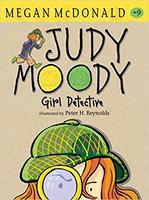
Judy Moody, Girl Detective
Its an honest-to-jeepers mystery! Agent Judy Drewdy sets out to solve the case of the missing puppy when a canine-cop-in-training vanishes into thin air.Judy Moody is in a mood. A sleuthing, Nancy Drew kind of mood. So whats a WBMS (worlds best mystery solver) to do? Go find a mystery, thats what! And she doesnt have to snoop for long: when Mr. Chips, a beloved crime-dog-in-training, goes missing, Judy Drewdy and her chums, agents Dills Pickle (Frank), Spuds Houdini (Rocky), and James Madagascar (Stink) find themselves smack-dab in the middle of a reallife, scare-your-pants-off whodunit. Was Mr. Chips stolen by dirty dognappers? And why are chocolate-chip cookies disappearing all over town? Watch out for red herringsalong with clever references to classic Nancy Drew mysteriesas Eagle Eye Moody and company are hot on the case!
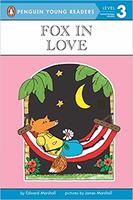
Fox in love
Fox falls in love with several girls and then enters a dance contest with his sister.
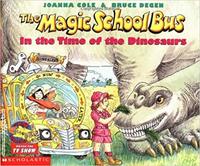
The Magic School Bus In The Time Of The Dinosaurs
Ms. Frizzle, using the magic school bus, takes her class back in time to see the dinosaurs firsthand.
